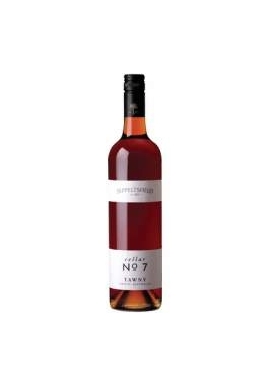In Northern Portugal, among the Douro mountains and along the upper reaches of the Douro river, grow the vines which give the world one of its most revered wines. Port, as an unfortified wine, would be remarkable only for its blackish colour and unpalatable taste. Its secret lies in fortification and blending. That the grapes which provide the b...
In Northern Portugal, among the Douro mountains and along the upper reaches of the Douro river, grow the vines which give the world one of its most revered wines. Port, as an unfortified wine, would be remarkable only for its blackish colour and unpalatable taste. Its secret lies in fortification and blending. That the grapes which provide the base wine should contain the qualities which, after years of maturation, will become apparent in the wine, is nothing short of incredible.
In the upper Douro there is almost no soil: the heavy schistose surface which is a combination of compressed clay and granite, and the steep hillsides combine to form land which is most unfavourable to the grape. The climate, also, is extreme. In this region, close to the Spanish border and cut off from the influence of the Atlantic by mountains, summers are extremely hot with temperatures commonly exceeding 38°C (100°F). In winter, up to 127cm (50ins) of rain may fall, much of which would just run off the slopes were it not for the elaborate terracing which the Port growers have built. The terracing, which is being constantly extended into new areas and unplanted tributaries of the Douro, has enabled the formation of soil but, even so, it is sometimes necessary to use explosives to break the ground before planting.
From this extraordinary land come the Port grapes - 30 or 40 varieties of them - which are still trodden by teams of men in a cement trough called a lagar. Fermentation takes place in the growers farm, or quinta. The young, partially fermented wine is run into barrels which are quarter-filled with brandy. This stops the fermentation, strengthens the wine and preserves a considerable proportion of the natural sugar. No sweetening is ever added to Port. The wine is then taken down to Opporto where the shippers, many of whom have their own quintas, store the wine in oak barrels called pipes.
One of Australia’s best known fortified wines traces its genesis back to a barrel of fine fortified wine set aside by the Seppelt wine making family in the Barossa in 1878. Patriarch Benno Seppelt decreed that this barrel, the finest of that vintage, should remain untouched for one hundred years. In 1978 the family released the first of the precious Para Liqueurs. In succeeding years, the family and subsequent corporate owners have continued the tradition, releasing limited bottles of Para Liqueur Vintage tawny wines on the 100th anniversary of their creation.
Wine critic Huon Hooke from the Sydney Morning Herald newspaper summed up Para’s importance to Australia’s wine community in a few succinct words: “Like the ’51 Grange, like a Streeton painting, a Melba recording, a Bradman bat, or a Lawson short story, it’s part of the Australian ethos. A true icon.”
A change to the Wine Australia Corporation Act 1980 means that from now on, ‘Port’ produced in Australia must no longer be called “Port” but can be called ‘Vintage’.
Tawny ~ Vintage There are no products in this category
ABN: 11 806 263 393
Liquor Licenses
337 526 06
360 674 16
